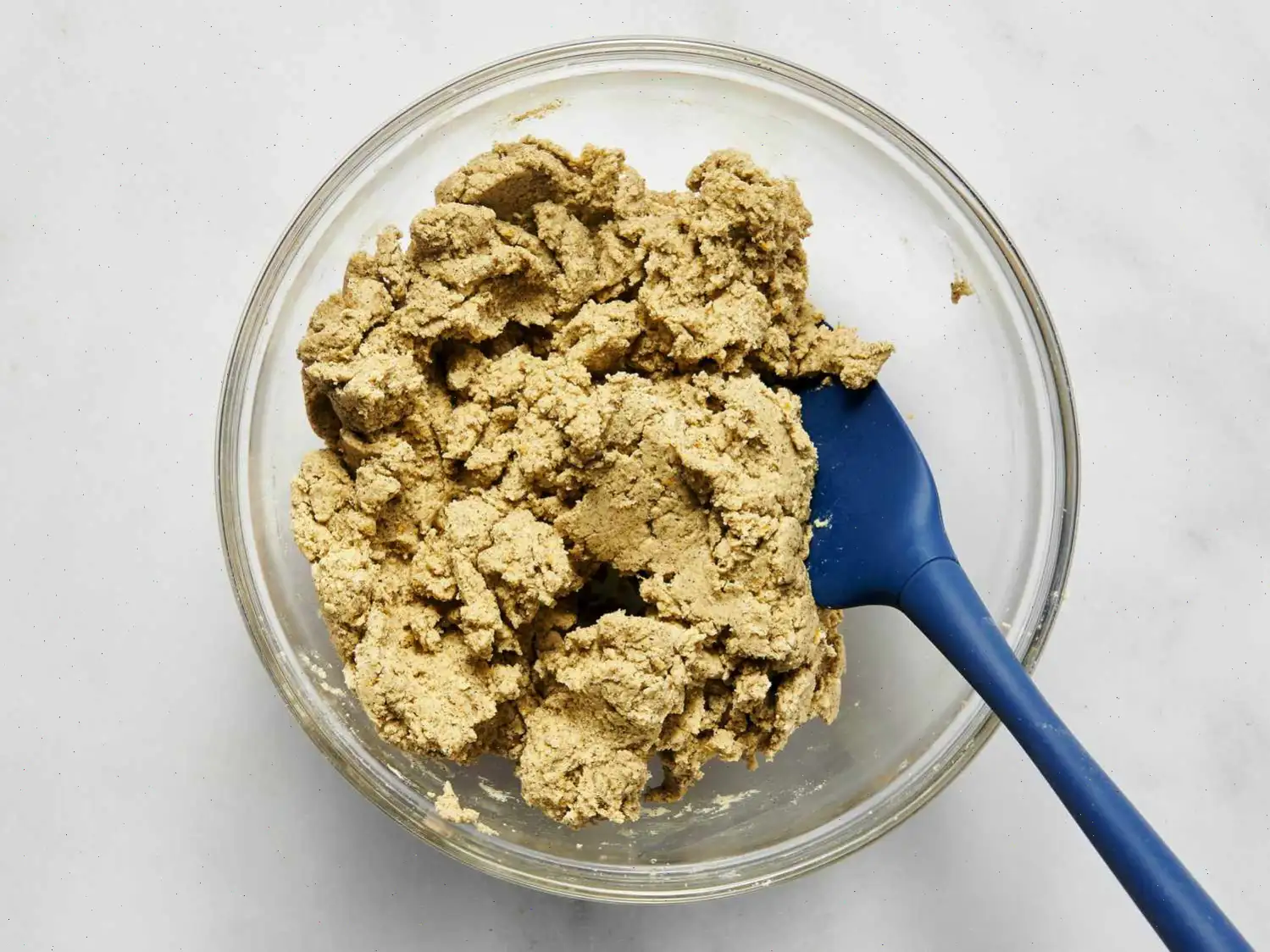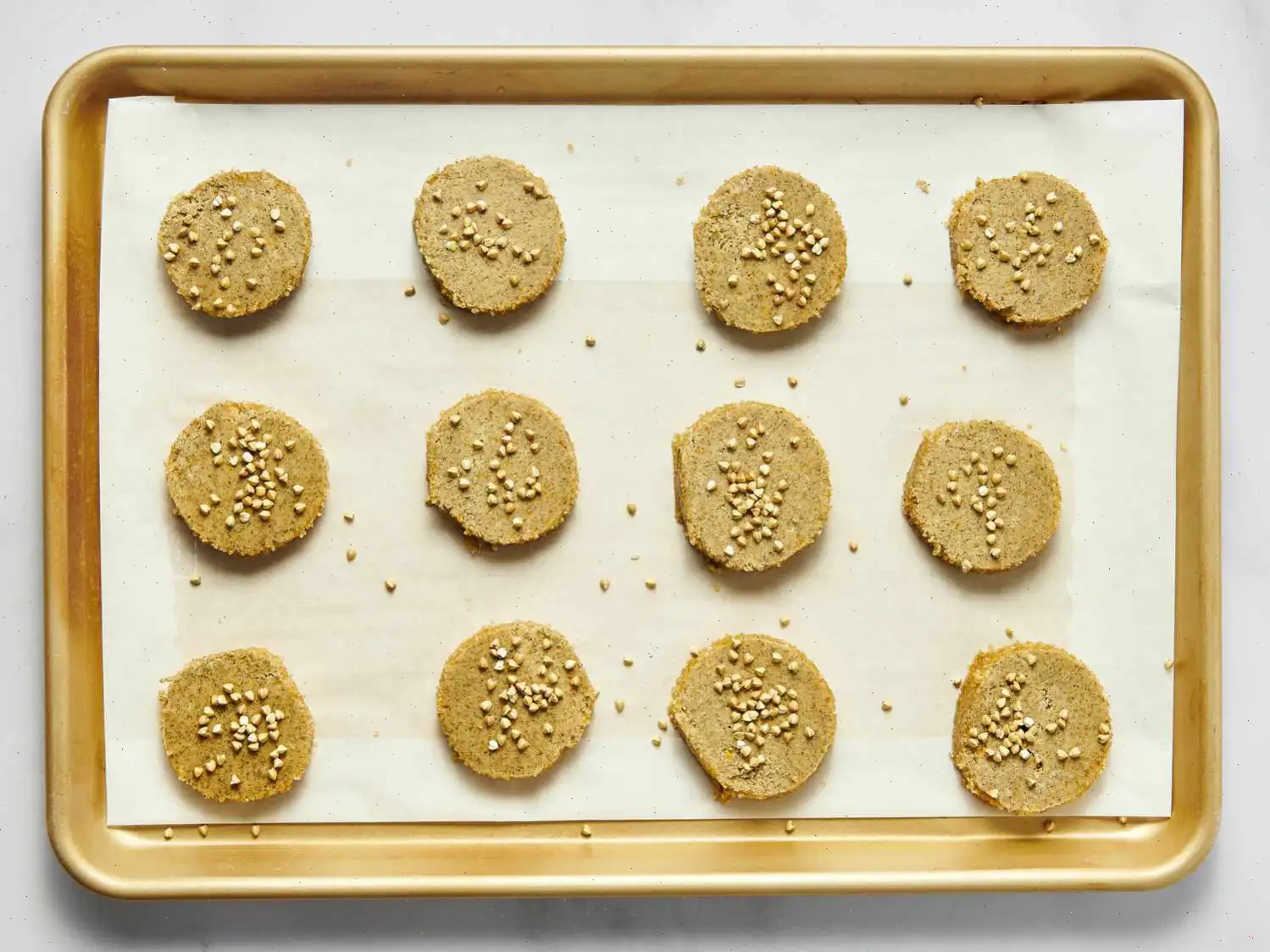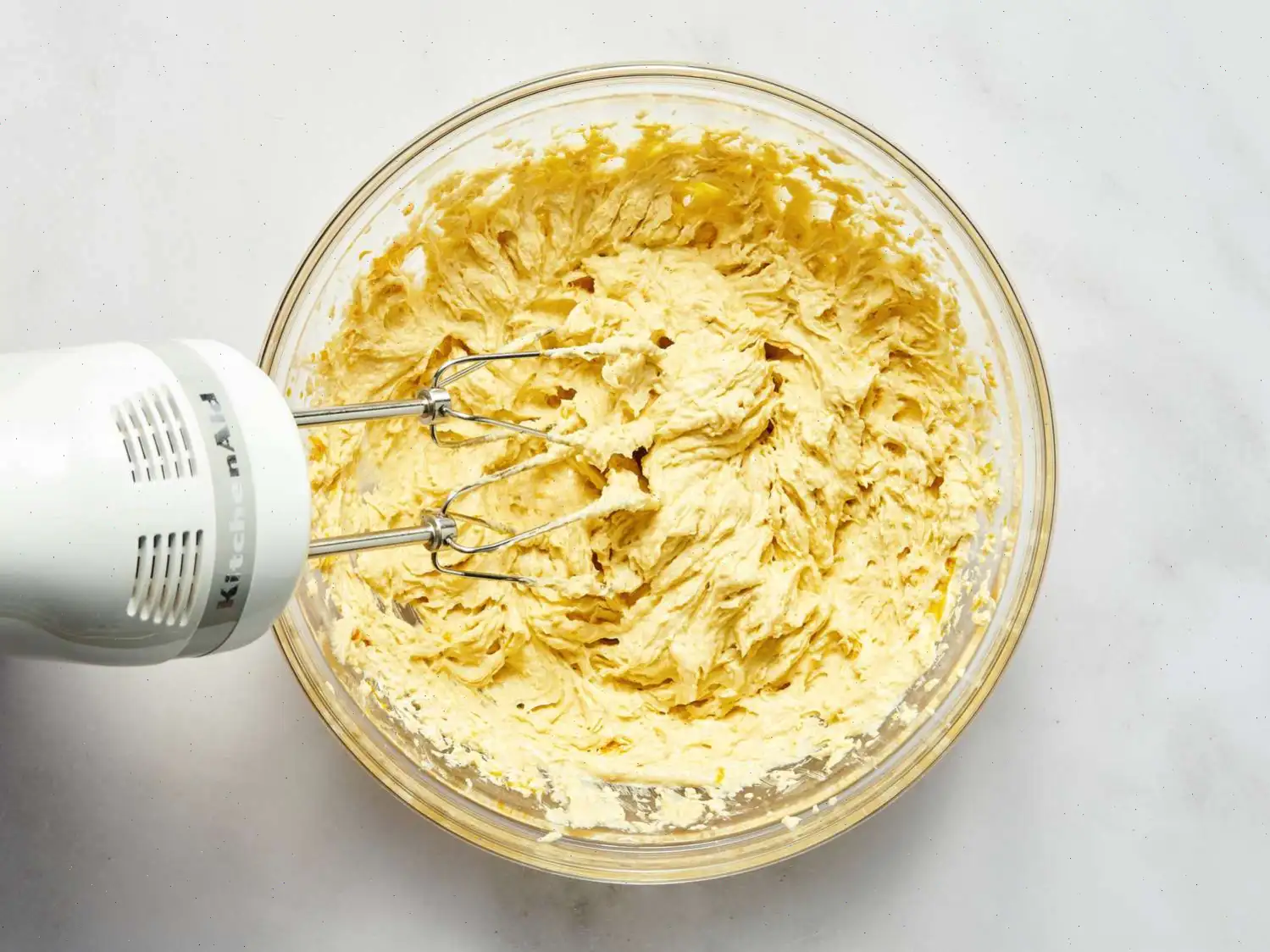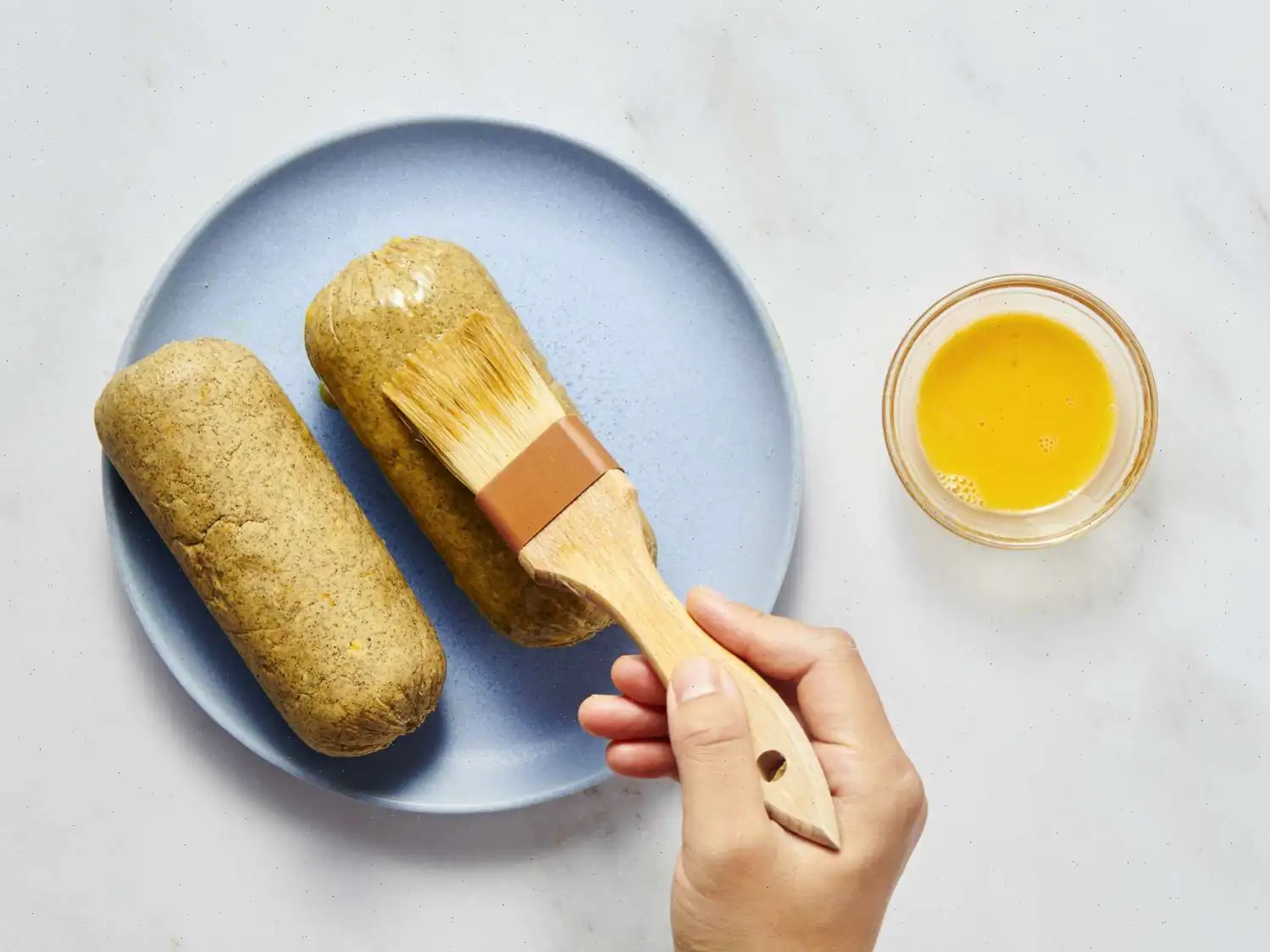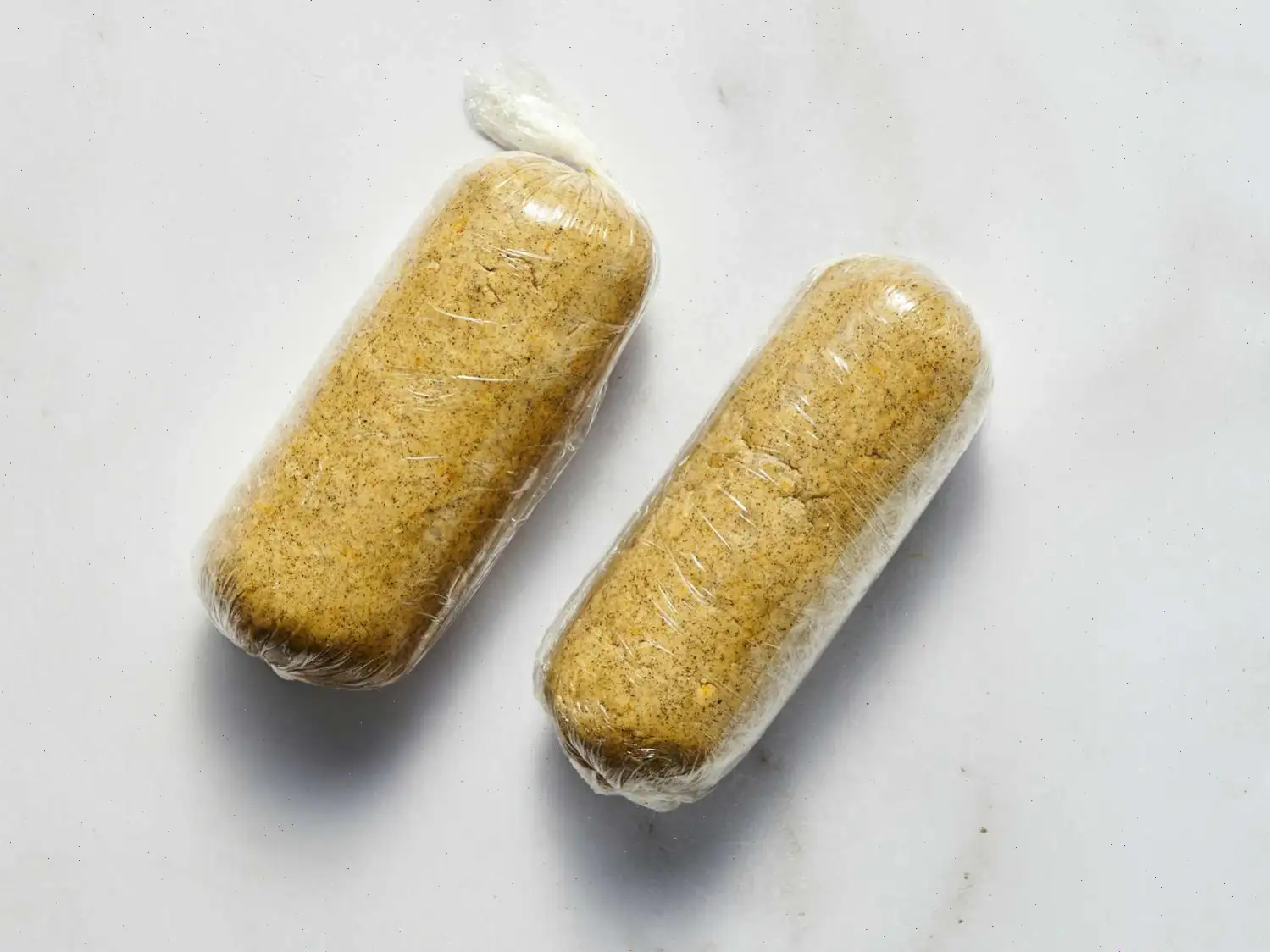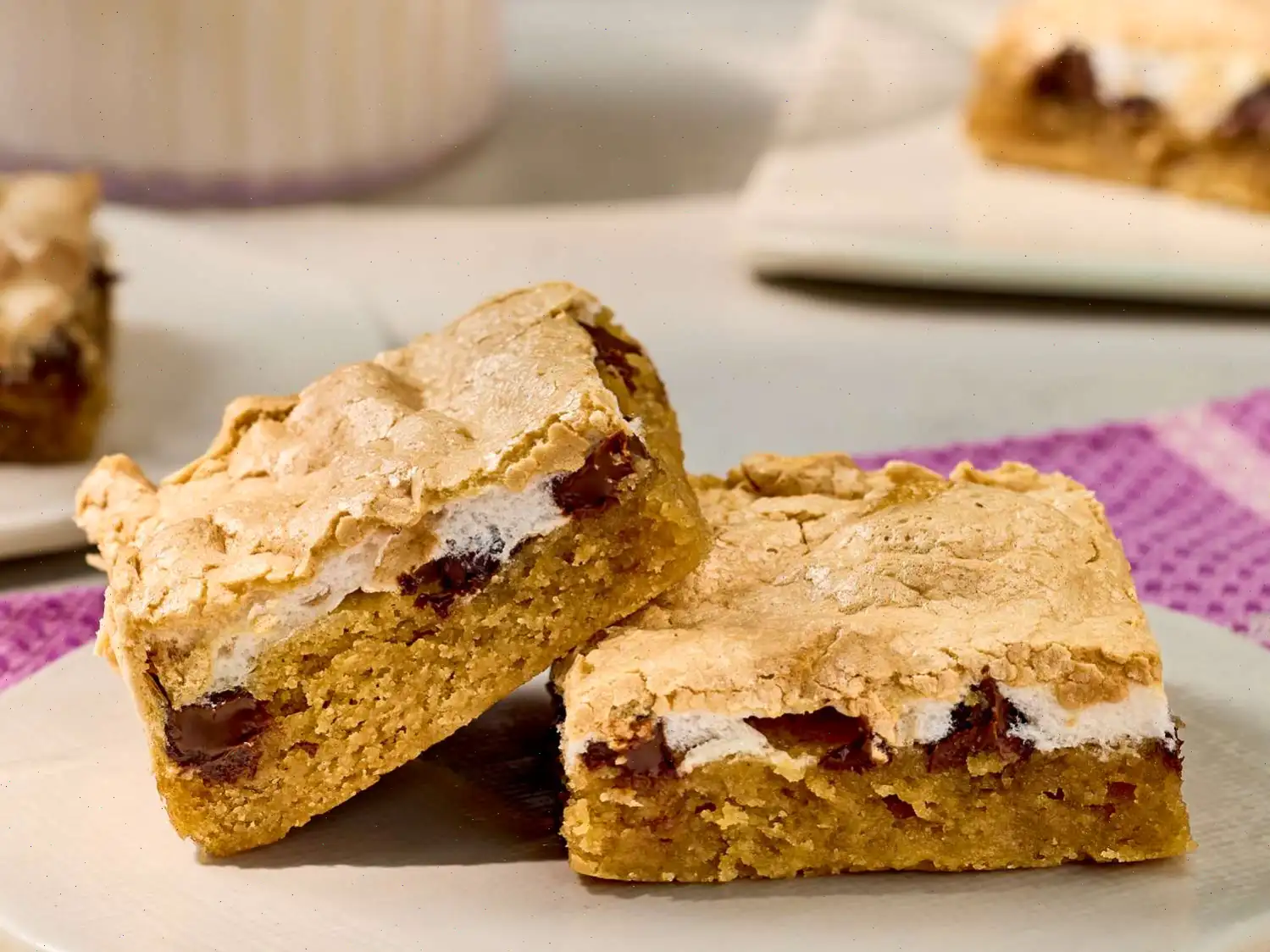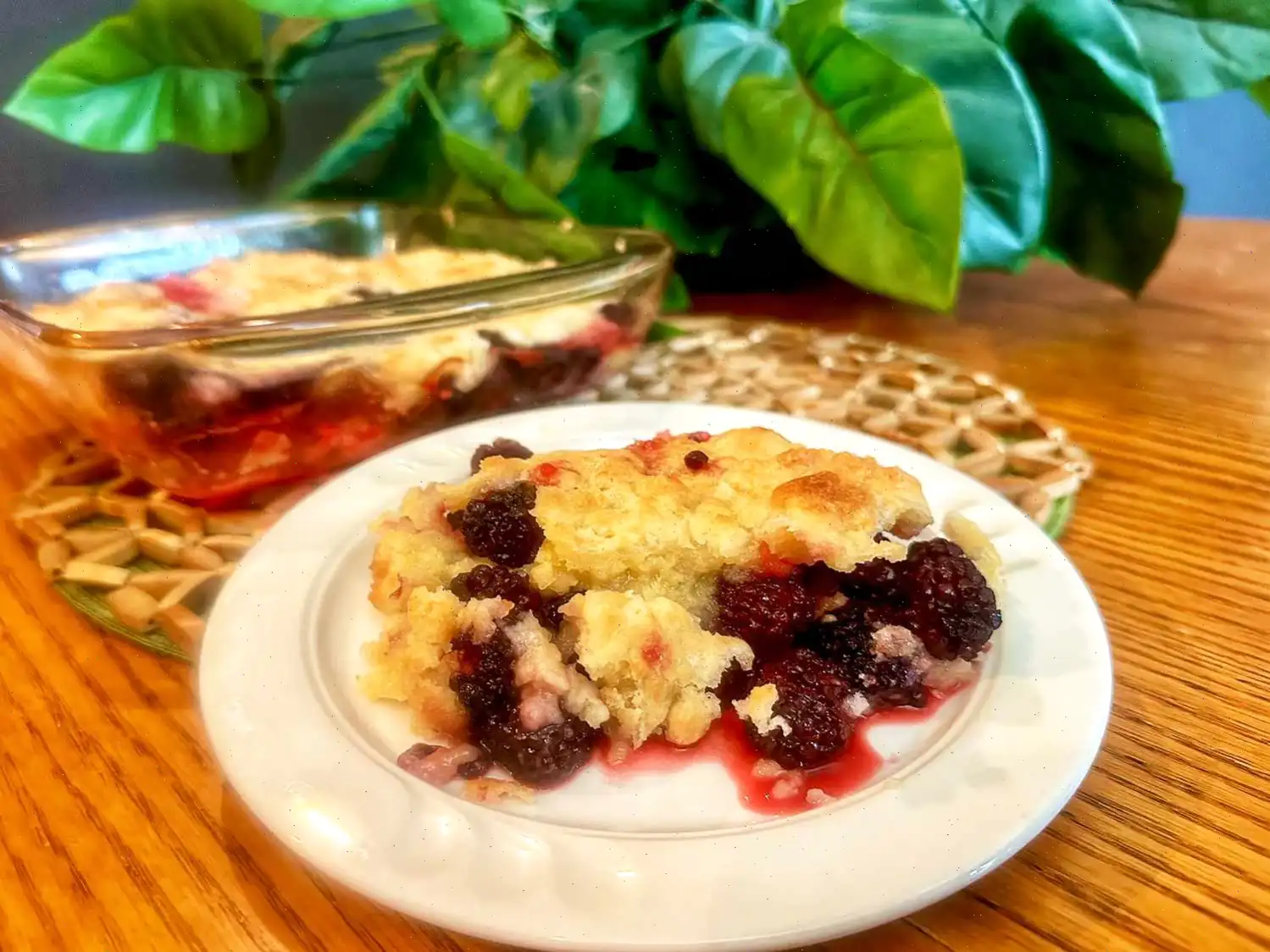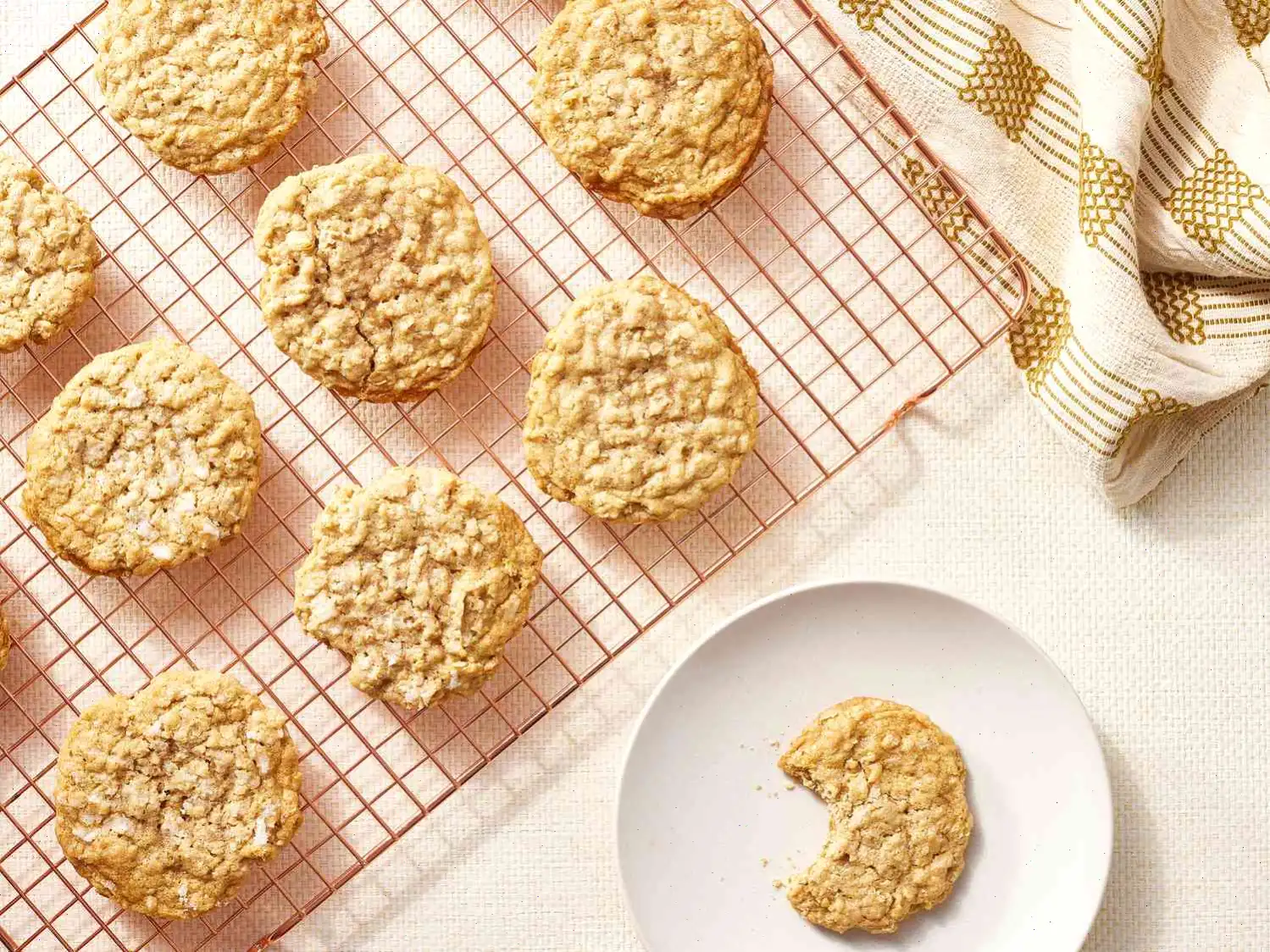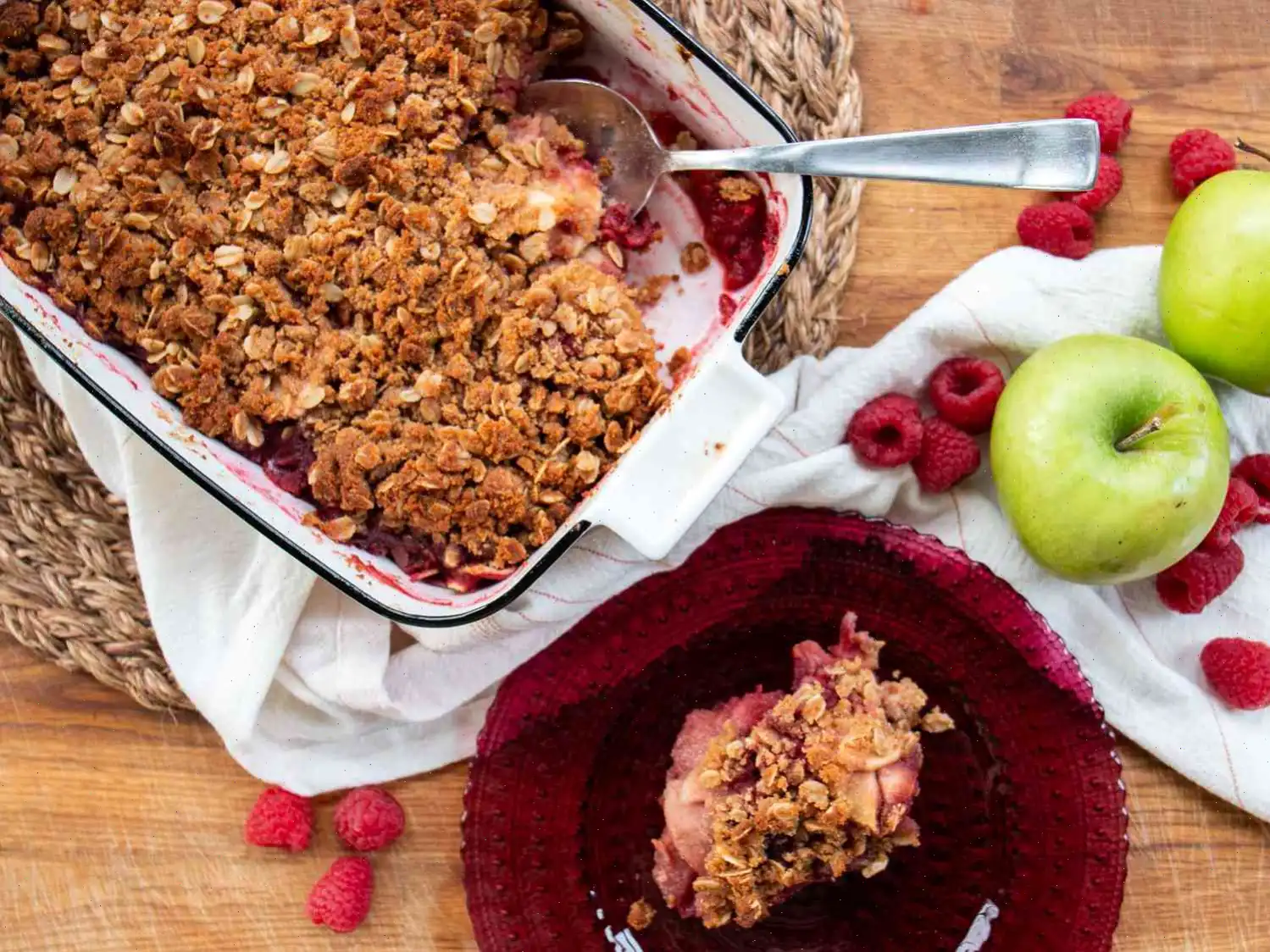
Buckwheat and Orange Shortbread Cookies Recipe
Ingredients
This recipe was developed at its original yield. Ingredient amounts are automatically adjusted, but cooking times and steps remain unchanged. Note that not all recipes scale perfectly.
- 1 cup plus 1 1/2 tablespoons salted butter, softened
- 1/2 cup light brown sugar
- 1/4 cup white sugar
- 2 large egg yolks
- Zest of 2 oranges
- 2 cups plus 1 tablespoon all-purpose flour
- 1/2 cup dark buckwheat flour
- 1 large egg, lightly beaten
- Crunchy demarara sugar, as needed
- Buckwheat groats for sprinkling
Directions
- Gather all ingredients on your countertop for easy access.
- In a large bowl, combine softened butter, light brown sugar, and white sugar. Use an electric mixer to beat the mixture until light and fluffy, about 2-3 minutes.
- Add egg yolks and orange zest to the bowl. Continue mixing until well incorporated.
- In a separate small bowl, mix together all-purpose flour and dark buckwheat flour. Gradually add this flour mixture to the butter-sugar mixture. Stir until the dough forms a soft texture.
- Divide the dough into two equal portions. Place each half on a sheet of parchment paper or plastic wrap. Shape the dough into two logs, about 2 inches in diameter, using the paper or wrap to help form them. Tightly wrap each log and refrigerate for at least 6 hours, or until firm.
- Preheat the oven to 350F (180C). Line two baking sheets with parchment paper for easy cleanup.
- Once the dough logs are firm, unwrap them and brush each log with the lightly beaten egg.
- Place demarara sugar in a shallow dish. Roll the egg-washed logs in the sugar until fully coated.
- Cut each dough log into 1/2-inch thick slices. Arrange the slices on the prepared baking sheets, ensuring they are spaced out evenly. Optionally, sprinkle some buckwheat groats on top of each slice for extra texture.
- Bake the cookies in the preheated oven for 12-14 minutes, or until they are lightly browned. The cookies will firm up as they cool.
Nutrition Facts (per serving)
| Nutrition Information | Amount per Serving |
|---|---|
| Calories | 180 |
| Total Fat | 9g (11% Daily Value) |
| Saturated Fat | 5g (26% Daily Value) |
| Cholesterol | 51mg (17% Daily Value) |
| Sodium | 72mg (3% Daily Value) |
| Total Carbohydrate | 24g (9% Daily Value) |
| Dietary Fiber | 2g (7% Daily Value) |
| Total Sugars | 11g |
| Protein | 3g (6% Daily Value) |
| Vitamin C | 34mg (37% Daily Value) |
| Calcium | 35mg (3% Daily Value) |
| Iron | 1mg (5% Daily Value) |
| Potassium | 151mg (3% Daily Value) |
Note: Percent Daily Values are based on a 2,000 calorie diet. Your daily values may be higher or lower depending on your calorie needs.


Recipe Description: These all-butter shortbread cookies are flavored with the bright zest of oranges and enriched by the nutty, savory taste of dark buckwheat flour. A perfect balance of sweet and savory for any occasion.
Origin Story
The combination of buckwheat and orange in these shortbread cookies brings together two ingredients with rich histories. Buckwheat, despite its name, is not a type of wheat but a fruit seed, originating in Central Asia and spreading throughout Europe in the Middle Ages. It became a staple in many regions where wheat did not thrive, such as parts of Eastern Europe and Russia. Orange zest, on the other hand, comes from the ancient fruit cultivated in China for thousands of years before making its way to the Mediterranean and the rest of the world. This unique pairing of earthy buckwheat and fragrant citrus gives a nod to both Eastern and Western culinary traditions.
Regional Variations
The use of buckwheat flour in baking is especially prevalent in regions where the grain grows well, such as Eastern Europe, Russia, and parts of Asia. While shortbread is traditionally associated with Scotland, where it has been a beloved treat since the 12th century, the introduction of buckwheat flour adds a regional twist. In some parts of Europe, especially in Russia and Poland, buckwheat is used extensively in both savory and sweet recipes, making it a natural pairing with the beloved shortbread. The addition of orange zest is a modern variation, providing a refreshing citrus contrast to the nutty buckwheat flavor.
How it Differs from Similar Desserts
Traditional shortbread cookies, such as the classic Scottish version, are typically made with three ingredients: butter, sugar, and flour. The recipe for Buckwheat and Orange Shortbread Cookies deviates from this by incorporating dark buckwheat flour, which imparts a unique, slightly earthy flavor. This buckwheat addition gives the cookie a more complex, savory edge compared to the standard buttery sweetness of classic shortbread. Additionally, the bright citrus notes from orange zest bring a fresh contrast that isn't usually found in traditional recipes, adding a layer of complexity to each bite.
Where to Serve Buckwheat and Orange Shortbread Cookies
These cookies are a versatile treat that can be served at various occasions. In Europe, particularly in colder months, buckwheat-based desserts are often enjoyed alongside warm beverages like tea or coffee. The combination of nutty buckwheat and bright orange zest makes them an excellent choice for afternoon tea, as well as for holiday gatherings like Christmas or Easter. These cookies also pair well with desserts featuring rich chocolate or fruit preserves, offering a delightful contrast in flavor and texture. Whether served at a formal event or as a cozy treat at home, they are sure to impress with their unique flavor profile.
Fun Facts
- Buckwheat flour is gluten-free, making these cookies a great option for those with gluten sensitivities.
- The addition of orange zest not only enhances the flavor but also provides a burst of vitamin C.
- In some cultures, buckwheat is believed to have health benefits, such as improving digestion and supporting heart health.
- Shortbread cookies were once considered a luxurious treat, often reserved for special occasions or given as gifts.
You can listen to this recipe in AI audio format. Simply click the play button below to listen to the content in a format that suits you best. It’s a great way to absorb information on the go!
FAQ about Buckwheat and Orange Shortbread Cookies Recipe
Comments
Emily Thomas
10/09/2024 03:15:05 PM
My boyfriend said it’s the best thing I’ve ever made.


